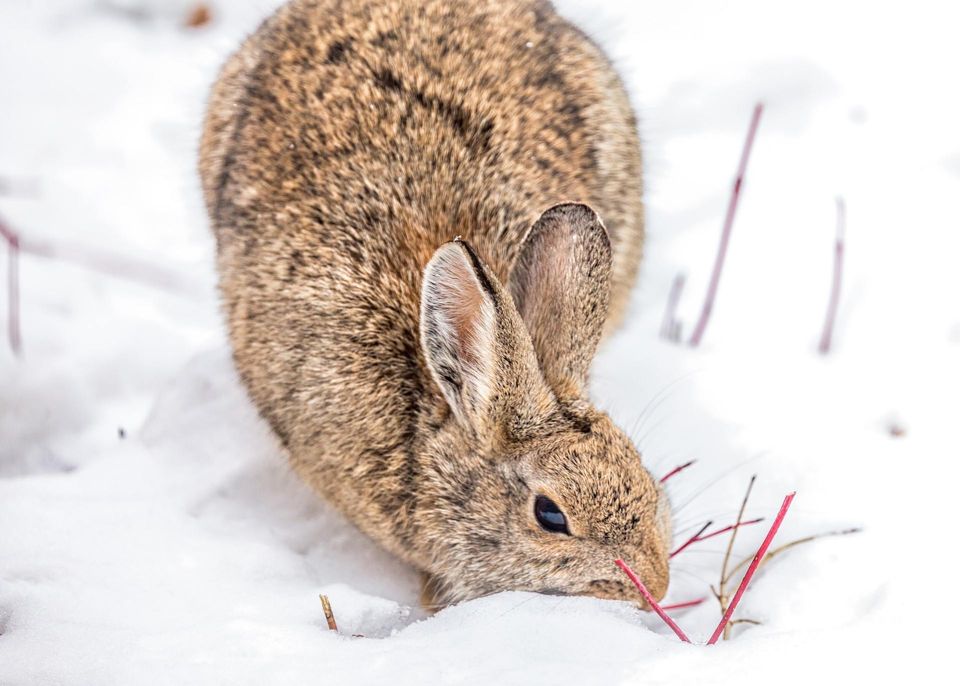Prevent Winter Rabbit Damage
This is a subtitle for your new post
Rabbits aren't only a problem for your yard and garden during the warm months of summer. They can do quite a bit of damage in the winter as well. A little planning as the season gets underway can minimize any rabbit problems you'll have to deal with later.
Wrap Up Your Shrubs to Prevent Rabbit Damage
Shrubs and perennials are at the most risk due to winter rabbit damage, and should be where you focus your efforts. As green food disappears under the snow, rabbits spend the season eating bark and twigs. That means your landscaping plants, including any young trees, are going to become targets.
+++ KEEP RABBITS AWAY DURING EVERY SEASON with SHAKE-AWAY RABBIT REPELLENT +++
Wrapping in canvas or burlap is a common practice but that is usually just a way of protecting the plants from the elements, not from animal nibbling. You'll need something a little tougher to protect against sharp rabbit teeth. Chicken wire or other similar wire mesh fencing works the best. If you are using chicken wire, you may need to wrap a few times to overlap the mesh because the holes are large enough for rabbit to bite through.
Rabbits are more likely to go after plants in your yard, but they may also chew on other wooden items if food is really scarce. Furniture, tool handles and any decor items that are left out can become rabbit food. Before the snow flies, find a secure place to store these things.
Keep Those Pesky Rabbits Out
It can also be a safer bet to just keep them out of your yard in the first place. Though that can be easier said than done, just like with most other animal pests. A fence can work as long as it is at least 3 feet high, and with small enough mesh that a little rabbit can't squeeze through. They can also dig underneath, so you'll have to bury another 6 inches to a foot of fencing below the surface too. Chain link can be a good choice but you don't really need anything that strong unless you are also trying to keep other large animals (or people) out of your property.
If a fence construction project isn't appealing, you can also use a scented product to deter rabbits from wandering onto your property. The smell of a predator will go a long way in keeping rabbits (and other rodent pests too) away from your yard. There are various ways to do this but it can be tough keeping most DIY scent products fresh through the winter due to the wet weather and all the snow. Instead, go with a professional scented repellent product that is designed to work through the weather and drive away the rabbits right until spring.
Hopefully these tips will minimize the amount of rabbit damage you discover in the spring. It might also be a good idea to continue with these ideas through the rest of the seasons next year, to reduce the overall population of rabbits that are living in or near your yard.
Critter Repellent All Natural Animal Repellent Blog













